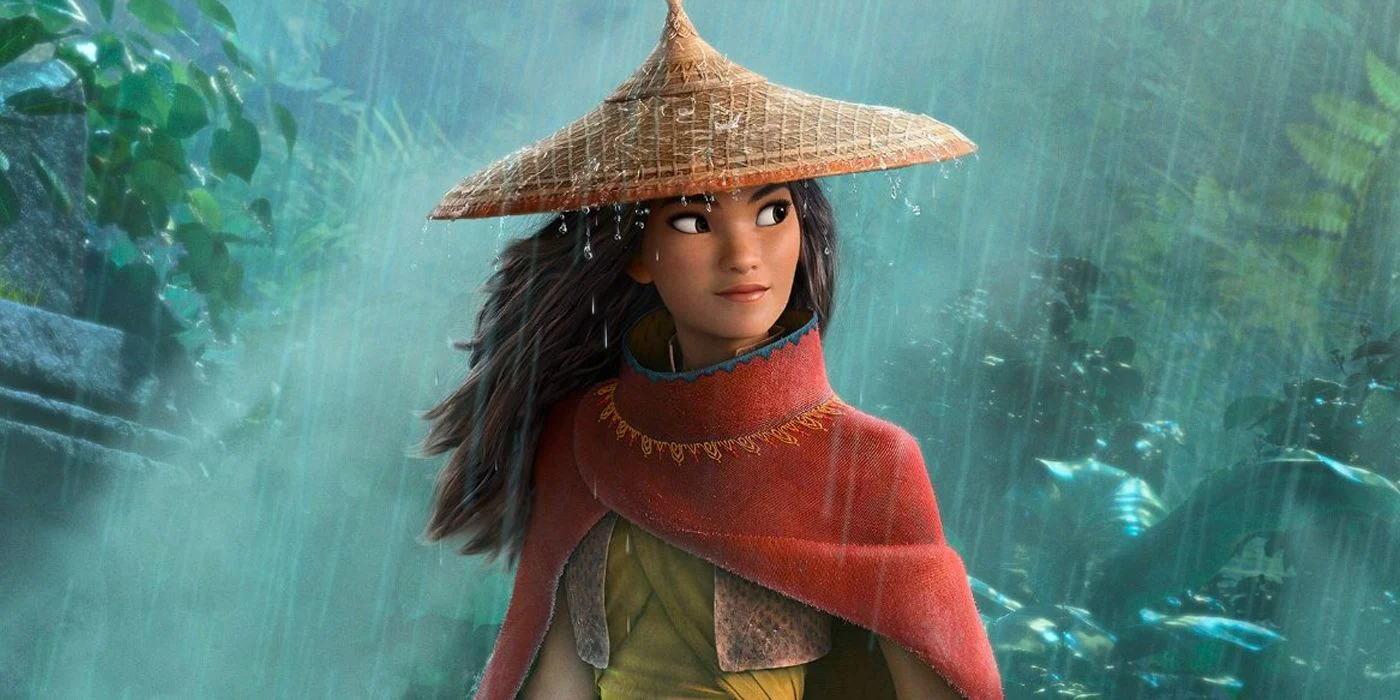By Emily Saks, Staff Writer
“How did this world get so broken?” Raya asks in the opening scene of Disney’s Raya and the Last Dragon, which premiered March 5, 2021. The film takes place in the fictional land of Kumandra, which is divided into five separate nations, each named after a part of a dragon: Talon, Fang, Spine, Tail and Heart. In Raya’s opening monologue, she explains that all people lived in harmony with each other and the dragons until monsters called the Druun arrived and began turning them all to stone. Sisu, the last dragon, gathered the magic of the dragons together into a gem and defeated the Druun.
However, in the years since, humans have fought over the dragon gem and the Druun have been growing in number, threatening their borders. Raya’s father, the chief of Heart, attempts peace talks with the other nations, and Raya even attempts to befriend the princess of Fang, Namaari. However, Namaari betrays her, and battle ensues between the nations. When the dust clears, the gem has shattered into five pieces and the Druun overrun Heart, turning Raya’s father and many others to stone. From there, Raya sets off on a quest to recover the pieces of the gem, defeat the Druun and heal her broken world.
Raya and the Last Dragon excels in many areas, featuring excellent voice acting and engaging fight scenes. The film also subverts the “Chosen One” narrative, a literary archetype in which the hero of the story assumes their role because they were predestined or “chosen” to do so. Instead, the filmmakers highlight the fact that people can become heroes by taking the first steps toward trust and reconciliation, even when it’s difficult.
Unlike previous Disney films, this one gives us a protagonist who is deeply flawed, but also realistic and complex. Raya is one of the few Disney princesses whose primary obstacle in the film is a psychological one; even the Druun are only the secondary villains of the story because their existence is framed as a manifestation of the distrust generated by humans. While previous princesses have struggled with magical or natural forces, unfortunate circumstances of their birth or with finding their place in society, few Disney princess films have focused on a protagonist wrestling with the emotional impact of a traumatic experience, as is the case with Raya’s trust issues following Namaari’s betrayal. The Disney princess archetype has changed significantly since films like Cinderella and Snow White, and continues to be redefined in ways that make these characters more complex and dynamic.
The film is also notable for featuring a heroine of Southeast Asian descent, and the world of Kumandra incorporates elements of many Southeast Asian cultures in its food, martial arts and floating markets. Although Raya was not based on a real person, she was inspired by real women in Southeast Asian history, a point that the creative team behind the film really wanted to emphasize. One interesting detail mentioned by the creative team is the use of food to illustrate Raya’s character arc: “Whether it’s her father sharing his dream and trying to open her world and making her soup, or when you see her as an adult, and she’s broken and disillusioned, and she’s just chewing on her jerky because she doesn’t trust anybody,” writer Adele Lim says about the use of food as a storytelling device in the film.
However, the film’s portrayal of Southeast Asian culture has a more mixed reception, with some praising it and others critiquing it. In certain ways, the premise of the film falls short in terms of cultural representation. Southeast Asian critics have pointed out that unlike films like Moana (2016) and Coco (2017), the use of culture in Raya and the Last Dragon serves as more of a backdrop rather than a key part of the plot. Moana, for example, heavily incorporates the Polynesion tradition of wayfinding into the premise of the film, and the plot of Coco is heavily inspired by the Mexican Day of the Dead celebration. In comparison, Raya’s story falls flat. One critic writes that Raya “acts like a tourist, hopscotching from kingdom to kingdom in search of pieces of a dragon gem,” and adds that while she occasionally engages with characters from the other kingdoms, “they mostly provide comic relief, rather than act as fully formed characters.”
Adding fuel to the fire is the fact that East Asian actors comprise much of the leading cast, including Korean-American actor Daniel Dae Kim, Korean-Canadian actress Sandra Oh, and Chinese-Korean-American actress Awkwafina. The casting choice represents a common pattern in Hollywood not to distinguish between distinct Asian ethnicities and perpetuates the false idea that these cultures are interchangeable. In a film that seeks to celebrate Southeast Asian cultures, you would expect greater inclusion of Southeast Asian actors.
Raya and the Last Dragon is an exhilarating adventure in an intricate and beautiful world. The cast and creative team render the story and characters in a way that is both touching and grounded in truth. While the film has faced some criticism for its representation of Southeast Asian culture, it still makes an enjoyable experience for children and adults alike.
Image credit: Collilder
